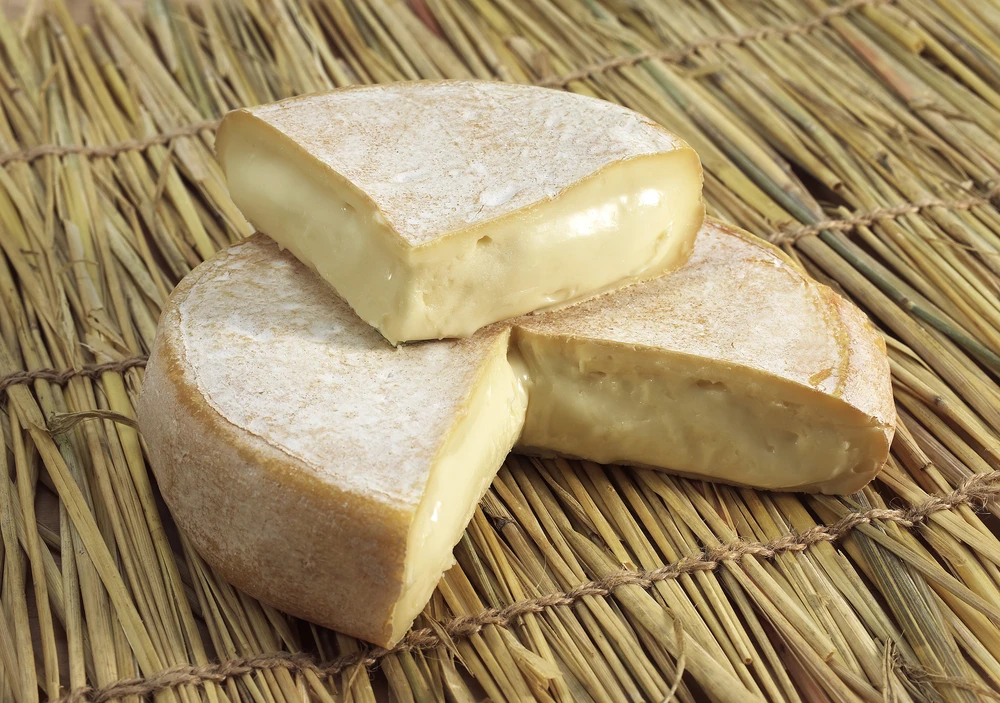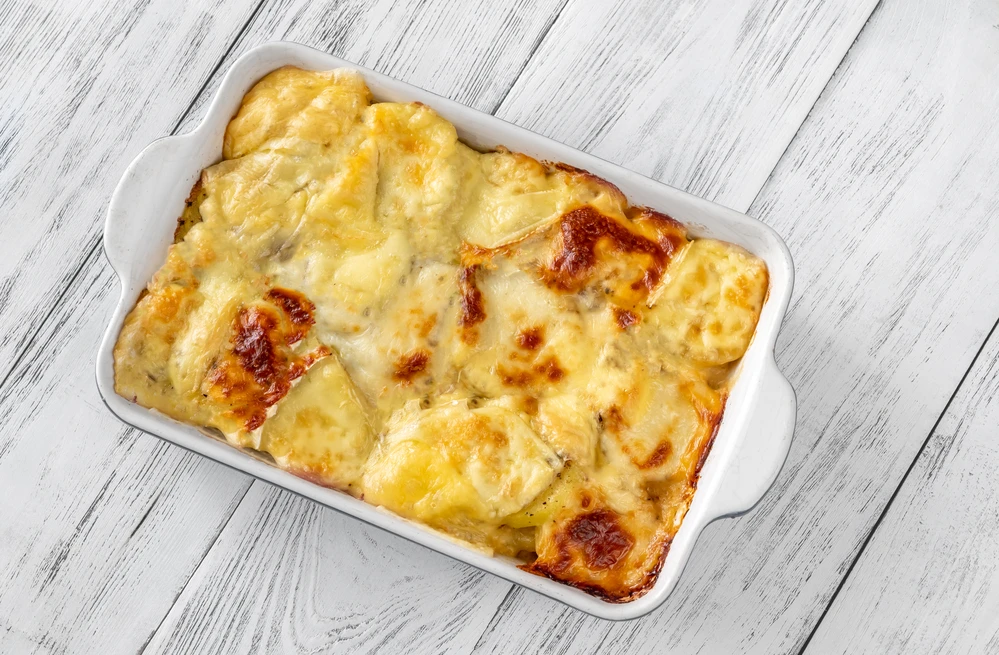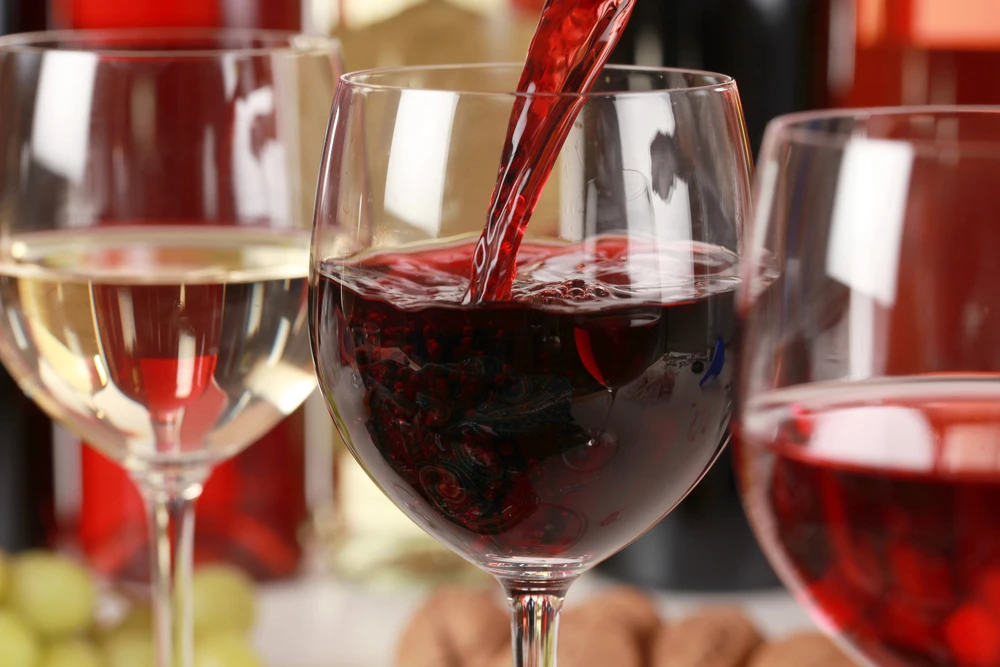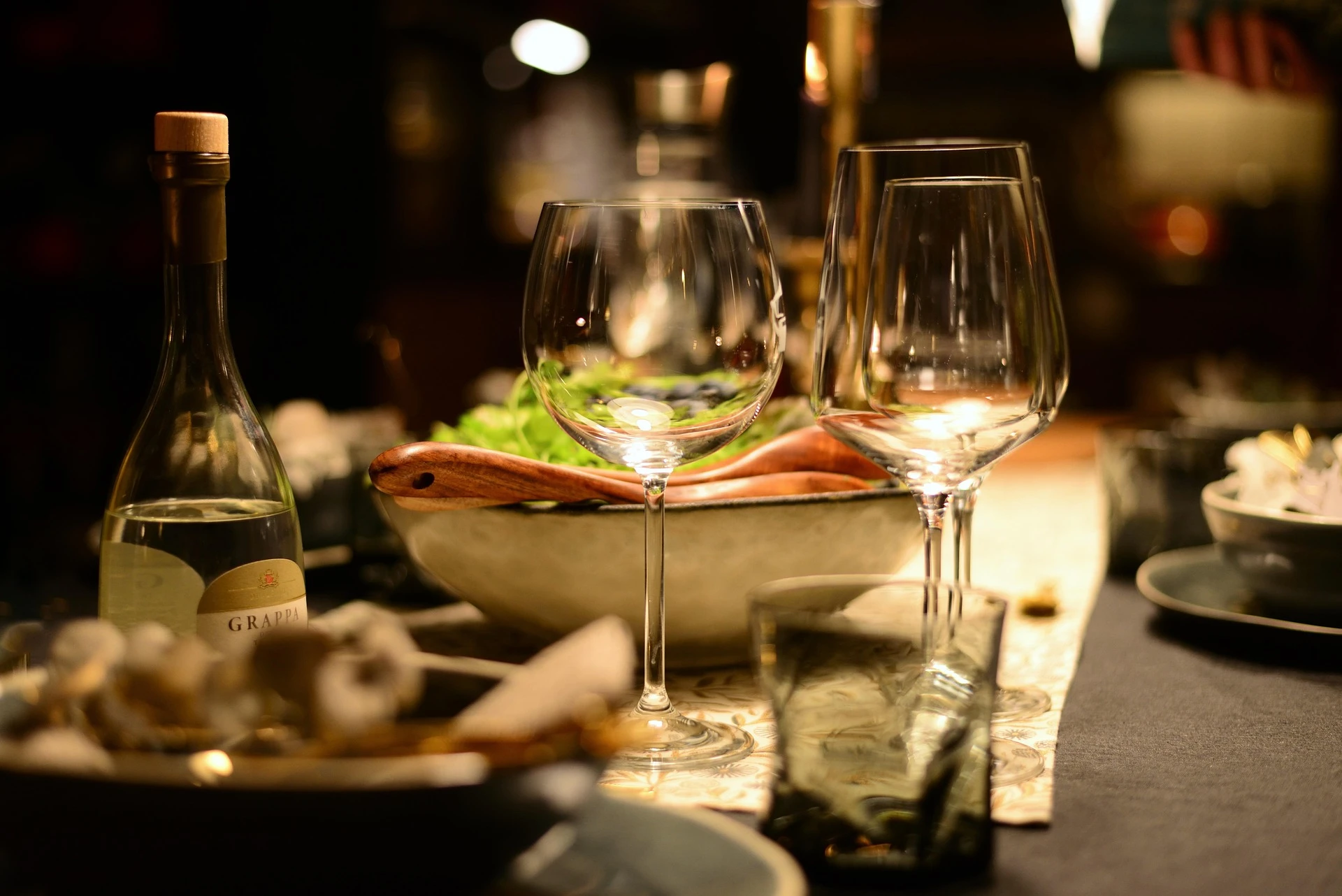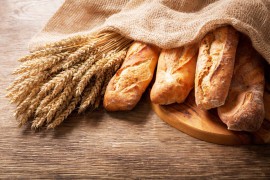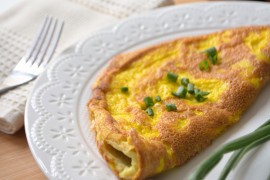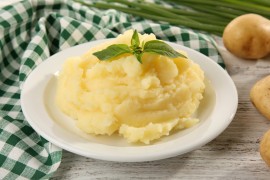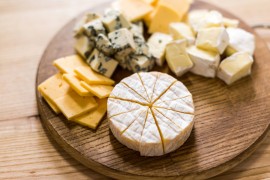The origin of tartiflette
Contrary to popular belief, tartiflette is not a medieval dish but a recent creation. It was invented in the 1980s by the Syndicat interprofessionnel du reblochon (Interprofessional Reblochon Cheese Association), which wanted to boost consumption of this Savoyard cheese. Inspired by an old peasant dish called la péla, a mixture of potatoes, onions, and cheese, tartiflette has become, in just a few years, a symbol of mountain cuisine. Today, it can be found in mountain refuges as well as on family tables, always served with the same spirit of sharing and warmth.
Reblochon cheese, the melting heart of tartiflette
Reblochon cheese. Photo selected by Monsieurdefrance.com: slowmotiongli via depositphotos.
Reblochon is an uncooked pressed cheese made from raw cow's milk, originating in the Thônes valleys in Haute-Savoie. Its name comes from the verb "reblocher," which meant "to milk the cow a second time." In the 14th century, to pay less tax, farmers would perform an incomplete first milking before the tax collector arrived. Once he had left, they would "reblochaient" (milk again), obtaining richer milk, which was the origin of reblochon. Its slightly fruity taste, melt-in-the-mouth texture and thin rind make it perfect for gratinating without hardening. Choose a farmhouse reblochon, recognizable by its green label, which guarantees that it is made from raw milk produced on the farm.
Ingredients (serves 4)
tartiflette : photo depositphotos for Monsieurdefrance
-
1 kg of firm potatoes (Charlotte variety)
-
1 farmhouse Reblochon cheese (approximately 1 pound)
-
200 g smoked bacon bits
-
2 yellow onions
-
20 cl of thick cream
-
1 glass of white wine from Savoie (optional but recommended)
-
Salt, pepper from the mill
-
A little butter for the pan
Step-by-step preparation of tartiflette
Step 1: Prepare the ingredients
Peel and slice the potatoes into thick rounds. Finely chop the onions. Cut the Reblochon cheese in half horizontally.
Step 2: Cook the potatoes
Cook them for 10 to 15 minutes in a large pot of salted water until they are tender but firm. Drain them thoroughly.
Step 3: Fry the bacon and onions
Melt a knob of butter in a frying pan. Add the onions, allow to brown, then add the bacon bits. Fry until everything is golden brown.
Step 4: Deglaze with white wine
Pour the white wine into the pan to loosen the cooking juices. Reduce for 3 minutes over medium heat. Then add the crème fraîche, season lightly with pepper, and simmer for 2 minutes.
Step 5: Assemble the tartiflette
In a buttered gratin dish, arrange a layer of potatoes, then half of the onion, bacon, and cream mixture. Repeat the layers. Finish by placing the Reblochon cheese, cut in half, rind side up.
Step 6: Place in the oven
Bake for 20 to 25 minutes at 400°F (gas mark 6-7) until the cheese is melted and golden brown.
Step 7: Serve hot
Let stand for 5 minutes before serving to allow the flavors to blend. Serve with a green salad dressed with vinegar and, if possible, a glass of chilled Savoie white wine.
The best substitutes for Reblochon in the United States
🧀 1. Fontina (Wisconsin or Danish)
- Creamy texture, melts well without separating.
- Slightly nutty flavor, similar to Reblochon.
- Excellent melt/mild flavor ratio.👉 This is the best overall substitute for tartiflette.
🧀 2. Raclette cheese (imported or locally produced)
- Increasingly available in the United States, often pasteurized.
- Melts perfectly, with a typical alpine aroma.
- Gives tartiflette a slightly stronger flavor, much appreciated by cheese lovers.👉 “Authentic mountain” option, excellent in gratins.
🧀 3. Havarti (Danish or American)
- Very mild, melts well, easy to find.
- Ideal for a family-friendly or “kid-friendly” version.👉 The American choice to replace mild French cheeses.
🧀 4. Brie (double cream, pasteurized)
- More buttery and creamy taste, but similar in texture.
- Remove the rind if it is too thick.👉 Makes for a richer and creamier tartiflette.
🧀 5. Taleggio (Italian cow's milk cheese)
- More pronounced aroma, similar texture to Reblochon.
- Excellent gourmet alternative, available in delicatessens.👉 Ideal if you want to keep the “farmhouse cheese” character of the dish.
💡 Tip from Monsieur de France
To get closer to the original taste of Reblochon, mix:
→ ⅔ Fontina + ⅓ Raclette or Brie.
This duo recreates the melt-in-the-mouth texture and fruity notes typical of Reblochon, while remaining compatible with American products.
Food and wine pairing
depositphotos Monsieur de France.
Tartiflette pairs well with local wines. Serve it with an Apremont, a Roussette de Savoie, or a Chignin-Bergeron. Their freshness and floral aromas cut through the richness of the Reblochon cheese and bring out the full flavor of the dish. Alcohol abuse is dangerous for your health. Please drink responsibly.
Regional variations of tartiflette
Tartiflette has inspired many variations in the Alps:
-
Croziflette: a Savoyard version where potatoes are replaced by crozet, small square buckwheat pasta typical of Savoie.
-
Morbiflette: a specialty of the Jura region, which replaces Reblochon with Morbier, a cheese with a stronger, slightly smoky flavor.
-
Munstiflette: a variant from the Vosges and Alsace regions, where Reblochon cheese is replaced by Munster cheese, resulting in a more full-bodied and flavorful tartiflette.
-
Salmon tartiflette: a more modern take on the classic dish, this lighter version replaces bacon with smoked salmon and adds a touch of dill.
-
These variations do not betray the original recipe: they show how much tartiflette has become a living dish, revisited throughout France according to the cheeses and tastes available.
FAQ – Tartiflette recipe
Image by congerdesign from Pixabay
What is the origin of tartiflette?
It was created in the 1980s on the initiative of Reblochon producers to promote their cheese, but it is inspired by an old Savoyard gratin called "péla."
Can you make tartiflette without white wine?
Yes. You can simply replace it with a little cream or vegetable broth to keep it moist.
Can tartiflette be prepared in advance?
Yes, prepare it up to the point where you would normally brown it, cover it, then reheat it in the oven at 350°F for 15 minutes before serving.
What cheese should you use if you don't have Reblochon?
Reblochon cheese is ideal, but you can replace it with Mont d'Or, Morbier, or even Brie for a milder version.
Can tartiflette be frozen?
Yes, once cooked and cooled. But the Reblochon will lose some of its texture when thawed.
What salad should you serve with a tartiflette?
A simple green salad (lamb's lettuce, arugula, curly endive) with a mustard vinaigrette balances the richness of the dish.
How long does it keep?
3 days in the refrigerator, in a well-covered dish.
Can it be made with potatoes that have already been steamed?
Yes, but reduce the baking time by about 5 minutes.
Is there a vegetarian version?
Yes, by replacing the bacon bits with sautéed mushrooms or pieces of smoked tofu.
Is this a genuine Savoyard recipe?
Yes, it comes directly from the Aravis mountain range, the birthplace of Reblochon cheese, and has established itself as a culinary symbol of Savoie.

